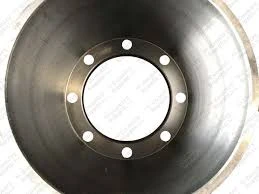
-
 Afrikaans
Afrikaans -
 Albanian
Albanian -
 Amharic
Amharic -
 Arabic
Arabic -
 Armenian
Armenian -
 Azerbaijani
Azerbaijani -
 Basque
Basque -
 Belarusian
Belarusian -
 Bengali
Bengali -
 Bosnian
Bosnian -
 Bulgarian
Bulgarian -
 Catalan
Catalan -
 Cebuano
Cebuano -
 Corsican
Corsican -
 Croatian
Croatian -
 Czech
Czech -
 Danish
Danish -
 Dutch
Dutch -
 English
English -
 Esperanto
Esperanto -
 Estonian
Estonian -
 Finnish
Finnish -
 French
French -
 Frisian
Frisian -
 Galician
Galician -
 Georgian
Georgian -
 German
German -
 Greek
Greek -
 Gujarati
Gujarati -
 Haitian Creole
Haitian Creole -
 hausa
hausa -
 hawaiian
hawaiian -
 Hebrew
Hebrew -
 Hindi
Hindi -
 Miao
Miao -
 Hungarian
Hungarian -
 Icelandic
Icelandic -
 igbo
igbo -
 Indonesian
Indonesian -
 irish
irish -
 Italian
Italian -
 Japanese
Japanese -
 Javanese
Javanese -
 Kannada
Kannada -
 kazakh
kazakh -
 Khmer
Khmer -
 Rwandese
Rwandese -
 Korean
Korean -
 Kurdish
Kurdish -
 Kyrgyz
Kyrgyz -
 Lao
Lao -
 Latin
Latin -
 Latvian
Latvian -
 Lithuanian
Lithuanian -
 Luxembourgish
Luxembourgish -
 Macedonian
Macedonian -
 Malgashi
Malgashi -
 Malay
Malay -
 Malayalam
Malayalam -
 Maltese
Maltese -
 Maori
Maori -
 Marathi
Marathi -
 Mongolian
Mongolian -
 Myanmar
Myanmar -
 Nepali
Nepali -
 Norwegian
Norwegian -
 Norwegian
Norwegian -
 Occitan
Occitan -
 Pashto
Pashto -
 Persian
Persian -
 Polish
Polish -
 Portuguese
Portuguese -
 Punjabi
Punjabi -
 Romanian
Romanian -
 Russian
Russian -
 Samoan
Samoan -
 Scottish Gaelic
Scottish Gaelic -
 Serbian
Serbian -
 Sesotho
Sesotho -
 Shona
Shona -
 Sindhi
Sindhi -
 Sinhala
Sinhala -
 Slovak
Slovak -
 Slovenian
Slovenian -
 Somali
Somali -
 Spanish
Spanish -
 Sundanese
Sundanese -
 Swahili
Swahili -
 Swedish
Swedish -
 Tagalog
Tagalog -
 Tajik
Tajik -
 Tamil
Tamil -
 Tatar
Tatar -
 Telugu
Telugu -
 Thai
Thai -
 Turkish
Turkish -
 Turkmen
Turkmen -
 Ukrainian
Ukrainian -
 Urdu
Urdu -
 Uighur
Uighur -
 Uzbek
Uzbek -
 Vietnamese
Vietnamese -
 Welsh
Welsh -
 Bantu
Bantu -
 Yiddish
Yiddish -
 Yoruba
Yoruba -
 Zulu
Zulu
Feb . 04, 2025 02:15
Back to list
drum brake auto adjuster
Drum brake systems have been a fundamental part of automotive technology for decades, underlying the straightforwardness and durability required by various vehicle models. Central to the efficiency and safety of these systems is the drum brake auto adjuster. Understanding the nuanced workings of this component not only enhances the braking performance but ensures longevity in vehicle maintenance, providing drivers with the assurance of reliable operational integrity every time they hit the road.
Recognizing signs of a malfunctioning drum brake auto adjuster is prudent for any vehicle owner or technician. Symptoms such as unusual brake noises, inconsistent braking force, or a longer stopping distance can indicate possible adjuster failure. Addressing these signs promptly with the expertise of a qualified mechanic can avert significant safety risks and costly repairs. Given their expertise and access to the latest technologies, professional mechanics remain the authority in diagnosing and rectifying these issues efficiently. For anyone looking to upgrade or maintain their drum brake systems, sourcing parts from reputable manufacturers is paramount for ensuring quality and reliability. Reliable manufacturers adhere to stringent industry standards, providing parts that are not only compatible but designed to perform across diverse driving conditions. This commitment to quality extends beyond performance, enhancing the overall trustworthiness of the product in the market, thereby affording users confidence in their investment. In essence, the drum brake auto adjuster is more than just a mechanical component; it’s a guardian of safety and performance on the road. Its expertise in maintaining brake efficiency is a testament to years of mechanical innovation and authority in automotive technology. Maintaining the trustworthiness of this instrument, through vigilant maintenance and sourcing high-quality parts, ensures a seamless integration of safety, longevity, and reliability in vehicle braking systems, proving indispensable for both everyday drivers and automotive professionals alike.


Recognizing signs of a malfunctioning drum brake auto adjuster is prudent for any vehicle owner or technician. Symptoms such as unusual brake noises, inconsistent braking force, or a longer stopping distance can indicate possible adjuster failure. Addressing these signs promptly with the expertise of a qualified mechanic can avert significant safety risks and costly repairs. Given their expertise and access to the latest technologies, professional mechanics remain the authority in diagnosing and rectifying these issues efficiently. For anyone looking to upgrade or maintain their drum brake systems, sourcing parts from reputable manufacturers is paramount for ensuring quality and reliability. Reliable manufacturers adhere to stringent industry standards, providing parts that are not only compatible but designed to perform across diverse driving conditions. This commitment to quality extends beyond performance, enhancing the overall trustworthiness of the product in the market, thereby affording users confidence in their investment. In essence, the drum brake auto adjuster is more than just a mechanical component; it’s a guardian of safety and performance on the road. Its expertise in maintaining brake efficiency is a testament to years of mechanical innovation and authority in automotive technology. Maintaining the trustworthiness of this instrument, through vigilant maintenance and sourcing high-quality parts, ensures a seamless integration of safety, longevity, and reliability in vehicle braking systems, proving indispensable for both everyday drivers and automotive professionals alike.
Latest news
-
What Are Drum BrakesNewsJul.07,2025
-
Understanding Brake Drum MaterialNewsJul.07,2025
-
Semi-Trailer Brake Drum: A Key Component for Extreme Loads and Long-Distance TransportNewsJul.07,2025
-
Drum Brake Pads for SaleNewsJul.07,2025
-
Brake Drums for SaleNewsJul.07,2025
-
Brake Drum ManufacturerNewsJul.07,2025
-
Aluminum Brake Drums: The Future of High-Performance CarsNewsJul.07,2025
